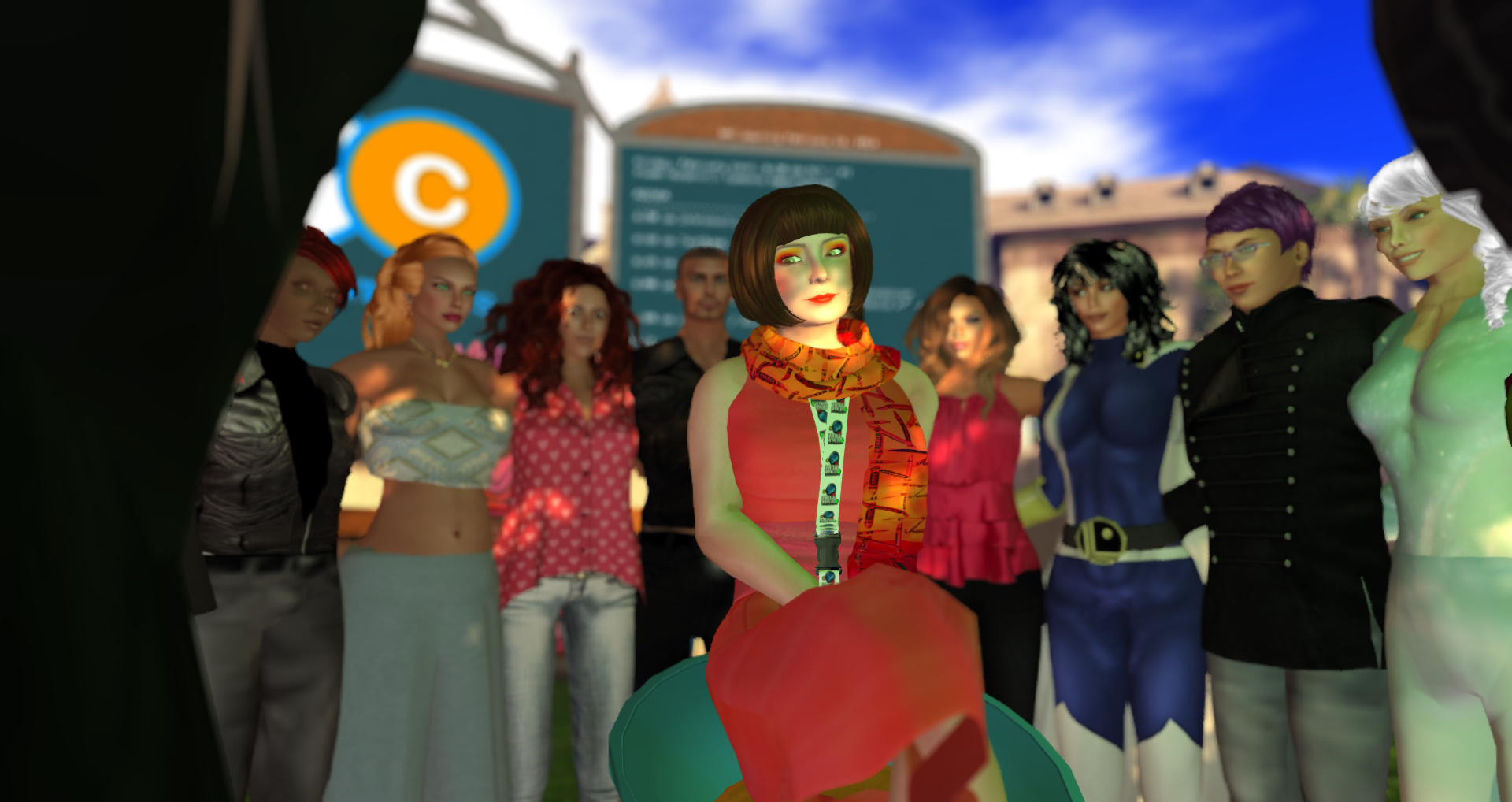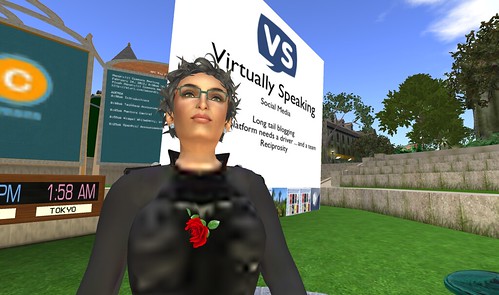Last Friday, February 24th, Widget Whiteberry from Virtually Speaking eloquently addressed the Nonprofit Commons in Second Life about issues relating to our current models of information gathering and sharing, the evolution of broadcast media, and how going virtual is a viable way to report experiences in real time while delivering a more inclusive and participatory experience for news audiences.
Below are excerpts from her presentation…
In the Great Depression, radio was the social glue that held America together. Soon after, in the global conflict of World War II, it was the glue that held the world together. In the 1950s television emerged, and became the new hearth around which people gathered, not just a source of information, but a platform for community. Today the Internet has made that same profound shift from source of information to source of connection: social media have become the ties that bind. In this last decade social media and blogs have been instrumental in the emergence of political movements. Flash mobs brought down a government in Spain and the citizen uprising in Iran into our daily experience. And now worldwide Occupy Assemblies. This is only the beginning.
Archimedes famously said – “Give me a lever and a place to stand and I can move the world.” Communication through social media is becoming the lever of choice for political action. Within that context, many find a place to stand to both hone and deliver messages born of experience, dialog and introspection. Virtually Speaking provides a platform to authors and other leaders, a source of political culture and ways to create community among early adopters of the latest generation.
In March 2007, Jay Ackroyd and Jordan Bigel took on a challenging project: how to bring the experience of attending a summer conference in Chicago to persons who, for reasons of personal economics or health or competing time demands, could not attend in person. The conference, Yearly Kos, appealed to progressive political, social, cultural and environmental activists who were active and quite vocal through online communications. Jay asked himself: What tools were available to not only report the experience in real time, which bloggers were able to do, or send broadcasts, which C-SPAN and other media were providing, but deliver a participatory experience?
They created Virtually Speaking with Jay Ackroyd. Since then, we’ve had 200 guests and more than 400 episodes. The number of episodes produced each year has grown from 16 in 2007 to 213 in 2011. Beginning March, we’ll be airing 5 each week. Social media enables all that.
Virtually Speaking has definitely carved out a significant niche for itself in the comfy corners of Second Life. The Nonprofit Commons’ own mentors are doing the same. Last week, they reported from Mentor’s Central on admirable uses of virtual worlds.
Zinnia Zauber: We want to share some positive success stories and encouraging ways to explain what wonderful things actually happen here. When any of us are successful, we all benefit.
Brena Benoir: This morning our discussion relates to many things we have discussed in recent meetings and how we explain our work here in SL. I am sure many of us has encountered the awkwardness that comes with trying to explain what SL is to someone unfamiliar with Virtual World technology. Often times we are faced with confusion, dumbfoundedness, counters that it’s all about sex. For me SL and other virtual worlds are a part of my daily life. You see for me, my RL work occurs in Virtual World settings.
Brena Benoir: This has become possible through Preferred Family Healthcare (PFH) being open and willing to pursue innovative technology to assist persons with Substance Abuse treatment. In May 2008, Dick Dillion, then Senior VP of Planning and Development at PFH, worked with the University of Wisconsin-Madison and the Robert Wood Johnson Foundation, to examine the idea of using virtual world technology to assist with substance abuse treatment outcomes. They looked at both benefits and barriers of using technology, specifically SL, to provide substance abuse treatment. This became a foundational research piece that became the basis of several grants that PFH has pursued to utilize virtual worlds for treatment purposes.
Brena Benoir: A parent shared their appreciation for their child’s participation in our first virtual world treatment program by stating, “I feel like I have my child back prior to drug use.”
Angelle Marquette: That’s pretty marvelous.
Brena Benoir: This is one example of how I counter those approaches where people are skeptical or resistant to look at the benefits of virtual worlds. There is something in SL for fit any mindset one has. If a person wants to work a recovery program and be involved in 12 step programs that is available here in SL. If a person wants to pursue education, that is available here in SL too. The point is, the way to motivate people to get involved in SL and help them stay engaged once they get here is find out what they want to connect to or get involved with. Go out of your way to help them engage and feel the immersion. We are advocates for what we do here and we need to be the front line ambassadors for teaching the world about the real value of virtual world technology.
Join us this Friday at the Plush Nonprofit Commons amphitheater (http://slurl.com/secondlife/Plush%20Nonprofit%20Commons/88/126/26) at 8:30am PST for more discussions of innovative and admirable uses of Second Life in our digital age.
Written by: alebez


